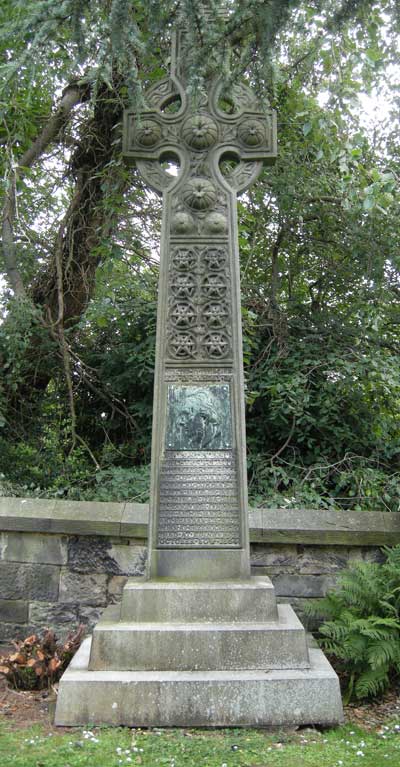The Stevenson Sisters
Research by Kate Neilson
Who are the Stevenson Sisters?
Louisa and Flora Stevenson were born in Glasgow in 1835 and 1839 respectively, two of a large family of James Stevenson a merchant of Glasgow and his wife Jane Stewart Shannon, daughter of Alexander Shannon, a merchant in Glasgow. The family moved to Jarrow in 1844 when James became senior partner of the Jarrow Chemical Co. of South Shields. After he retired from business in 1854 the family moved to Edinburgh shortly before Jane died and in 1859 the family settled in a house in Randolph Crescent. It was here that the 4 unmarried sisters, Jane, Elisa, Louisa and Flora spent most of the rest of their lives. Their father died leaving them financially well provided for and they were able to contribute to various causes. The sisters are acknowledged as playing a crucial role in the women’s movement in mid- Victorian Scotland: they were feminists, educationalists and philanthropists.
Elisa was one of the earliest members of the Edinburgh National Society for Women’s Suffrage, founded in 1867. Jane never attended public meetings but had a dominant influence at home. Louisa and Flora were founder members of the Edinburgh Ladies’ Educational Association in 1867 which organised university classes for women. Although women were unable to gain admission to the universities and thus gain a formal qualification, classes were taught by academics at university level and both Louisa and Flora were among 265 women enrolled for the first course of lectures in 1868 given by Professor David Masson.
Louisa's priority was the struggle for women to be allowed medical training and qualify as doctors: she was honorary treasurer of a committee formed to support Sophia Jex - Blake and help with legal costs in her campaign to open medical education to women. Success came in 1885 when women could qualify along with men for the new Licentiate of the Royal College of Physicians and Surgeons of Edinburgh and the faculty of Physicians and Surgeons of Glasgow.
Louisa was one of the first two women elected to the Edinburgh Parochial Board and the first woman to be elected a poor-law guardian concerned particularly about the improving the standard of nursing in the city poorhouse. She was re-elected 6 times to the Board of Managers of Edinburgh Royal infirmary. In 1875 she and Christian Guthrie Wright founded the Edinburgh School of Cookery and she was honorary treasurer until 1891 when it became the Edinburgh School of Cookery and Domestic Economy.
Louisa took a keen interest in the suffrage campaign all her life and during the 1890s was on the executive committee of the National Union of Women’s Suffrage Societies and represented the Edinburgh society on the parliamentary committee to handle suffrage activities among MPs. In 1906 she met Prime Minister Henry Campbell Bannerman as part of a deputation of suffragists and in that same year Edinburgh University conferred an honorary degree of LLD in recognition of her struggles for women’s higher education. She died at home in Edinburgh on 13 th May 1908.
Flora was a social reformer with a special interest in education for impoverished working class children, and in education for girls. In 1872 the Education (Scotland) Act enabled women to serve on school boards and in 1873 Flora was one of 2 women elected to the Edinburgh School Board and was so successful that she was re-elected for 33 years until her death. In 1899 she became the first woman chair of the Board and was also elected as a representative of the Board on the Edinburgh Educational Trust, the George Heriot Trust and the Burgh Committee on Secondary Education. That same year the Board paid her a personal tribute by naming a new primary school in Comely Bank after her. Her contribution to education was considered so outstanding that in 1892 she became an Honorary Fellow of the Educational Institute of Scotland. In 1903 she was awarded an honorary degree of LLD by Edinburgh University. In 1904 she was admitted as a burgess and guild brother of City of Edinburgh after she demonstrated the extent of how women had proved their worth in a local government body. That same year her portrait – painted by Alexander Roche-was commissioned and financed by public subscription : it hangs in the National Portrait Gallery in Queen Street.
In 1905 she received the Freedom of the City by Edinburgh Town Council and later that year she died in St. Andrews. At her funeral the streets in Edinburgh were filled with many mourners including 2000 – 3000 school children.
The headstone in Dean Cemetery also includes Isabella and Betsy Shannon, Louisa and Flora’s maternal aunts, and Annie Martha Ker, their sister Margaret Millar’s daughter. Interestingly, the last entry on the headstone alludes to Ann Pollock, ‘The nurse and valued friend of the family for 65 years.’
Sources:
Tom Begg, The Excellent Women: the origins and history of Queen Margaret College (1994)
Leah Leneman, The Scottish Suffragettes(2000)
E.Ewan,S.Innes,S.Reynolds (ed.) The Biographical Dictionary of Scottish Women(2006)

Gravestone of the Sisters' parents. Their stone is alongside and is illustrated under 'launch'.